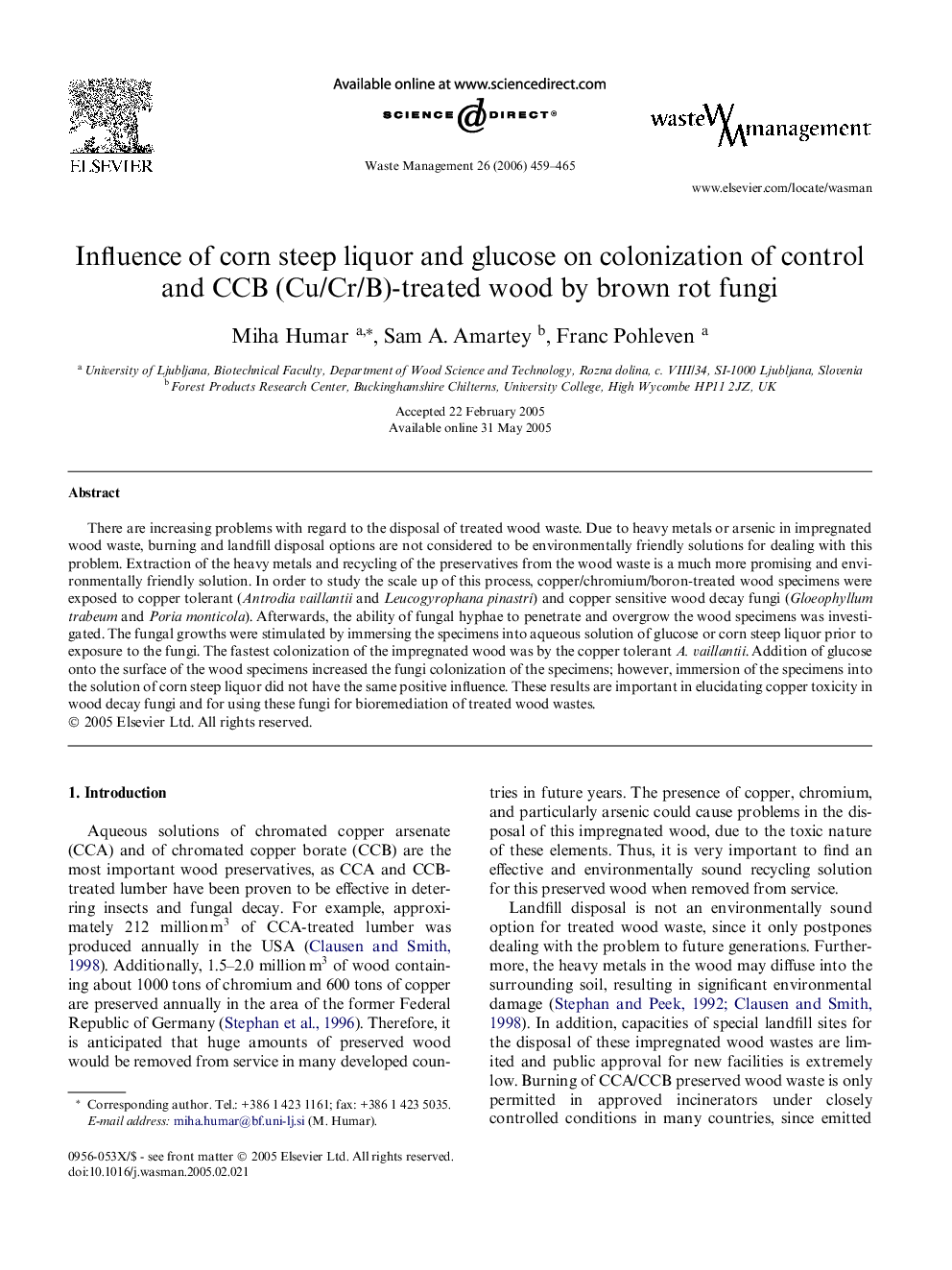| Article ID | Journal | Published Year | Pages | File Type |
|---|---|---|---|---|
| 4474037 | Waste Management | 2006 | 7 Pages |
There are increasing problems with regard to the disposal of treated wood waste. Due to heavy metals or arsenic in impregnated wood waste, burning and landfill disposal options are not considered to be environmentally friendly solutions for dealing with this problem. Extraction of the heavy metals and recycling of the preservatives from the wood waste is a much more promising and environmentally friendly solution. In order to study the scale up of this process, copper/chromium/boron-treated wood specimens were exposed to copper tolerant (Antrodia vaillantii and Leucogyrophana pinastri) and copper sensitive wood decay fungi (Gloeophyllum trabeum and Poria monticola). Afterwards, the ability of fungal hyphae to penetrate and overgrow the wood specimens was investigated. The fungal growths were stimulated by immersing the specimens into aqueous solution of glucose or corn steep liquor prior to exposure to the fungi. The fastest colonization of the impregnated wood was by the copper tolerant A. vaillantii. Addition of glucose onto the surface of the wood specimens increased the fungi colonization of the specimens; however, immersion of the specimens into the solution of corn steep liquor did not have the same positive influence. These results are important in elucidating copper toxicity in wood decay fungi and for using these fungi for bioremediation of treated wood wastes.
